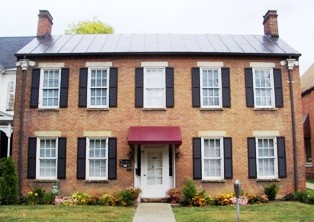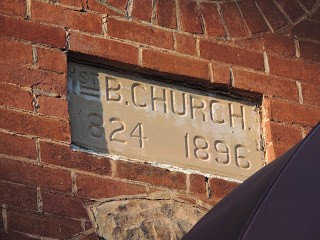David Nickens Heritage Center
Introduction
Text-to-speech Audio
Images
David Nickens Heritage Center


Backstory and Context
Text-to-speech Audio
The David Nickens Heritage Center is home to three permanent exhibits: The Underground Railroad, African American Women in the 19th Century, and The Black Church in America. The Heritage Center is also the original site of Nickens’s church, now called First Baptist Church of Chillicothe. In 1836, Nickens moved with his family to Cincinnati, where he remained until his death in 1838. Nickens also helped establish the African Union Baptist Church, which was formed due to discrimination faced in the white-dominated churches of Cincinnati.
Nickens was ordained as a minister at the First Regular African Baptist Church of Christ in 1825, and once ordained, the new congregation established articles of decorum, pledging them to work for the abolition of slavery. In 1867, the church was relocated to 65 West Fourth Street from the New Jerusalem Society. Along with the move came a new name, the First Baptist Church of Chillicothe.
Nickens was one of many Underground Railroad “conductors” in southern Ohio. He and other members of his church risked everything to assist slaves in running away from slave masters to freedom in the north. Those caught harboring or helping fugitive slaves could lose their jobs, home, or even their lives. The Underground Railroad came under use by Ohio residents by 1810. The state of Ohio played a vital role in getting runaway slaves across the river to the border, into Canada. Some newly-freed slaves would remain in Ohio and move into Black neighborhoods, but most sought complete freedom out of the country. Racial prejudice, opposition to anti-slavery, and the threat of violence made those who had escaped slavery want to completely escape the country.
The Heritage Center’s goal is to preserve and display both national and local African American heritage. On this guided tour, documents, photographs, and artifacts from all over the country are on display so one can feel how very real and close to home this chapter of American history took place. This museum serves as a hub for local and state history on the Underground Railroad as well as national history regarding the post-Civil War struggle for Black freedom.
